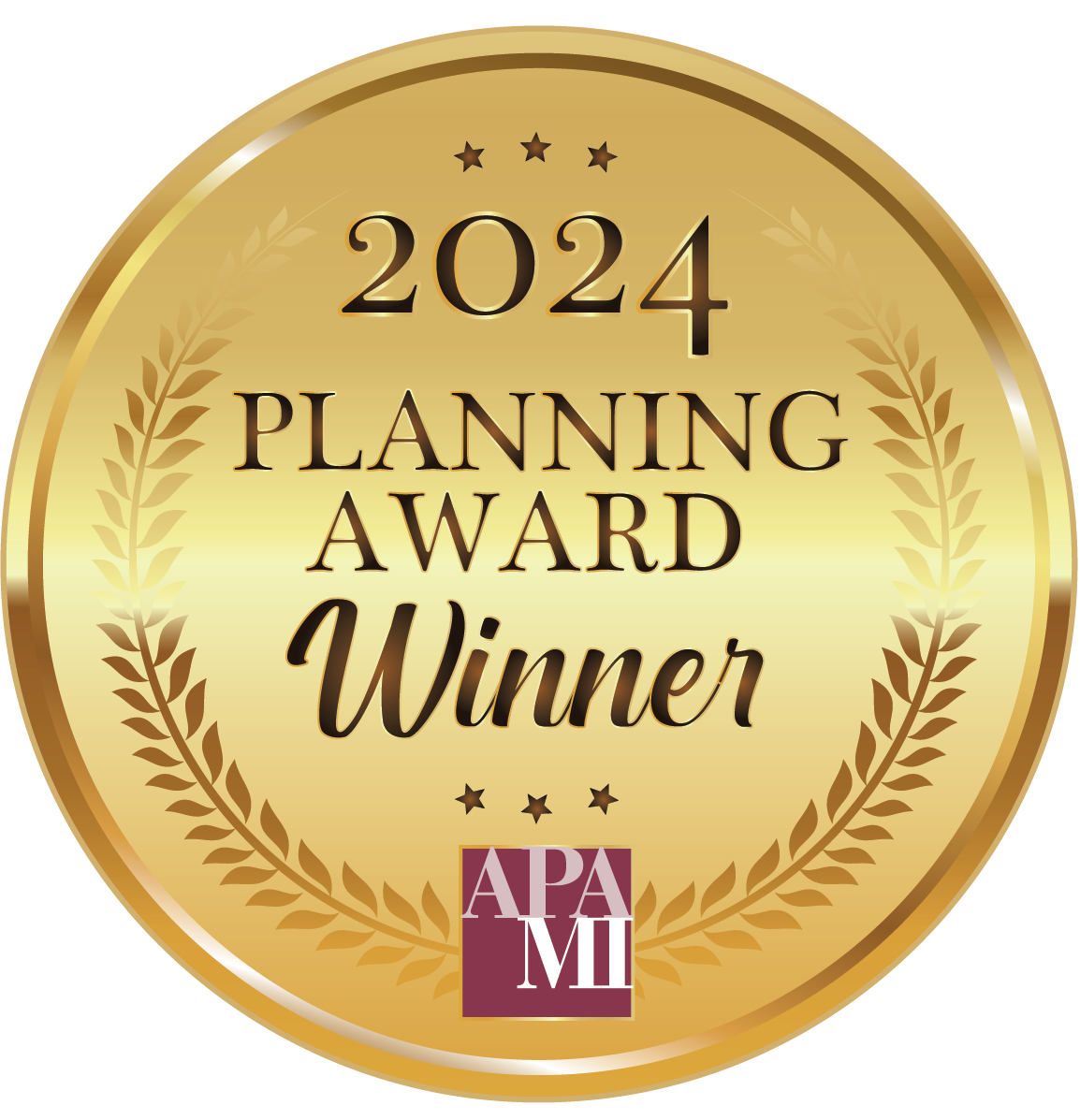
Morningside Housing Revitalization Strategy
DOWNLOADJune 12, 2024 - Escarleth Cucurachi Ortega, Monica Guo, Peyton Jackson, Charlotte Peterson, and Paige Smith

This project received the 2024 Planning Excellence Award for Outstanding Student Project from the Michigan Association of Planning
Morningside is a neighborhood located on the eastside of Detroit, Michigan. The community is backed by several strong partner organizations, including the United Streets Networking and Planning (U-SNAP-BAC) and the Morningside Community Organization, who work to improve housing conditions and increase homeowner education across the neighborhood. These partners are committed to serving Morningside, and are seeking further research to assess community housing needs. In response, a method for prioritization of repairs, paired with tools to identify target areas for funding has been created to aid in efficient distribution of government funds. With strategic prioritization of both individual homes and target areas throughout the neighborhood, the project aims to support Morningside residents in conducting home repairs. Additional recommendations extend to community vitality initiatives, which work to engage residents and enhance overall community desirability.
Morningside has 4,398 housing units in five census tracts. This report uses tract 5019, with 1,112 housing units, as a representative sample size for the external condition assessment. Tract 5019 is bordered by East Warren Avenue and Mack Avenue, and has lower household incomes than the surrounding tracts. Almost thirty percent of households in the tract live below the poverty line and there is a significant number of vacant parcels. The tract was surveyed using a weighted ranking system which quantified the repair needs of individual homes. These survey questions will be shared with community partners, along with instructions for replication of the process in the several remaining tracts that make up Morningside.
Following a system of housing prioritization that categorizes homes based on their visible external conditions for the 5019 Census Tract, 80% have been classified as properties in “good” condition. Twelve percent of lots were vacant, four percent (4%) earned “fair” rankings, three percent (3%) were not residential lots, and one percent (1%) were “critical” or “poor”.
A second survey was also administered to gauge the demand for internal home repairs at a Morningside community meeting. Roughly half of all respondents reported roof leaks, flooding in their basements, unsecure doors, and at least one broken window in their home. A smaller number of community members also communicated the need for repaired heating systems, assistance in fixing nonfunctional bathrooms, and new water heaters. The potential funding sources provided include funding opportunities that are applicable to external repairs, as well as these delineations of internal renovations. Recommendations also account for current market conditions that have exacerbated affordability challenges ,and are further complicated by the existing aging housing stock in Morningside.
The proposed strategies aim to ensure that community members are able to access funding to occupy safely habitable housing units, while furthering neighborhood vitality efforts. Recommendations have been categorized by timeframe, with strategies that can be completed in under three years classified as short-term, and three or more years as medium-term.
The first set of actionable recommendations focuses on informing and engaging residents. The methodology for surveying external conditions can be practiced by homeowners with their own properties. Conducting a community workshop to familiarize the neighborhood with the process of assessment would efficiently disseminate process tips and strategies. The workshop could be bolstered by the provided “Guide to Assessing your House” instructional material. Neighborhood walks where members of the community can evaluate housing conditions on the ground, guided by U-SNAP-BAC and Morningside Community Organization leaders, are also suggested to efficiently gather data, identify target areas, and record community feedback.
The next set of recommendations involves expanding assessment practices to the remaining tracts throughout Morningside. This step relies on familiarity with the provided Housing Prioritization Evaluation Database. All addresses in Morningside are listed in the database and can be populated with individual condition rankings gathered from previous assessment. The area priority ranking of the respective census tract is automatically factored into the overall housing priority score. This tool allows administrators to extend current priority initiatives past census tract 5019. Additionally, all of the figures in the database can be updated to be representative of new Census data or conducted home repairs. The results can be mapped using a free geographic information system (GIS) software, QGIS. With prioritization areas highlighted, in combination with the previous identification of the types of home repairs necessary, funding eligibility can be determined.
The Funding Eligibility Evaluation tool is intended to align funding sources with eligibility criteria. The tool accounts for affordability, demographic, and housing stock indicators. The Percentage of families living below poverty level and the percentage of housing units built before 1939, receive double weight because of their relevance to both financial feasibility of repairs, as well as the likelihood of home repairs being necessary. The resulting area funding eligibility priority for each tract can be used to direct funding applications depending on which areas demonstrate the greatest need.
In addition to the housing strategies, recommendations have been outlined to increase community vitality in Morningside. Morningside already has an active community organization that hosts neighborhood events, clean-up days, and maintains a community garden. These efforts can be expanded to help address the 17% of lots throughout the neighborhood that are vacant.
Addressing the gaps currently present in the housing conditions of the neighborhood in the coming years generates community longevity and works to ensure housing attainability for residents.



 Print
Print Email
Email




